Emre Gönültaş
Attacking and Defending Deep-Learning-Based Off-Device Wireless Positioning Systems
Nov 15, 2022

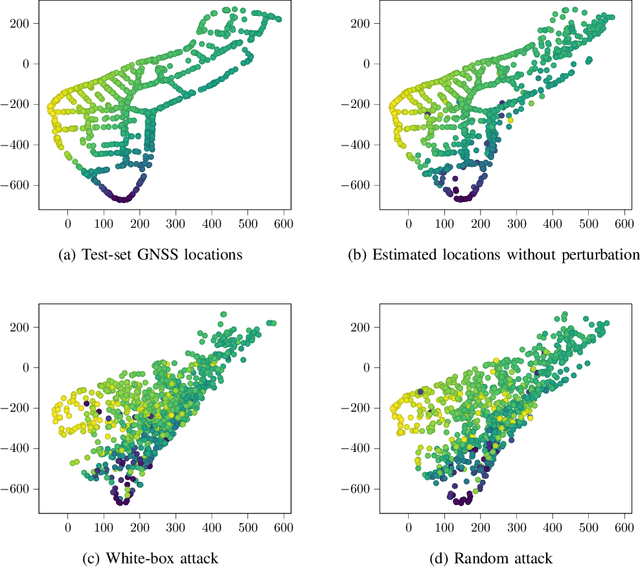
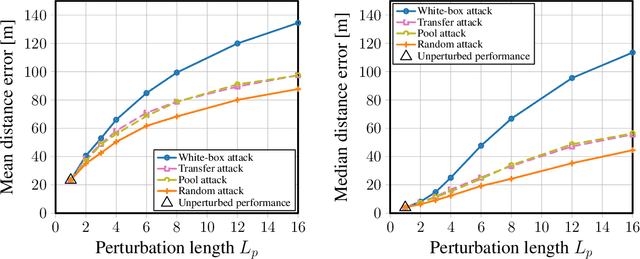
Abstract:Localization services for wireless devices play an increasingly important role and a plethora of emerging services and applications already rely on precise position information. Widely used on-device positioning methods, such as the global positioning system, enable accurate outdoor positioning and provide the users with full control over what services are allowed to access location information. To provide accurate positioning indoors or in cluttered urban scenarios without line-of-sight satellite connectivity, powerful off-device positioning systems, which process channel state information (CSI) with deep neural networks, have emerged recently. Such off-device positioning systems inherently link a user's data transmission with its localization, since accurate CSI measurements are necessary for reliable wireless communication -- this not only prevents the users from controlling who can access this information but also enables virtually everyone in the device's range to estimate its location, resulting in serious privacy and security concerns. We propose on-device attacks against off-device wireless positioning systems in multi-antenna orthogonal frequency-division multiplexing systems while minimizing the impact on quality-of-service, and we demonstrate their efficacy using measured datasets for outdoor and indoor scenarios. We also investigate defenses to counter such attack mechanisms, and we discuss the limitations and implications on protecting location privacy in future wireless communication systems.
Feature Learning for Neural-Network-Based Positioning with Channel State Information
Oct 28, 2021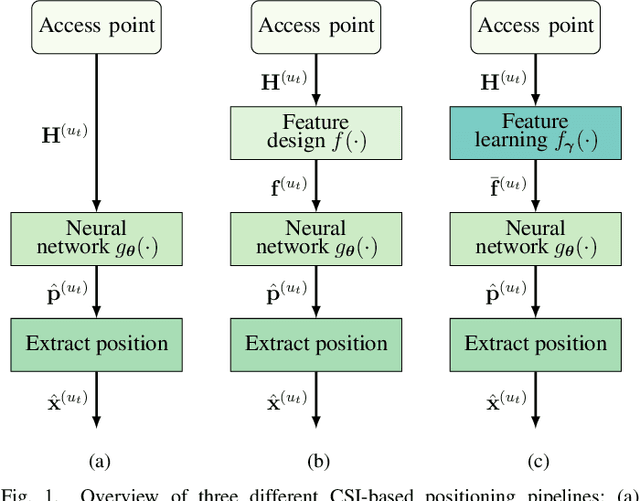

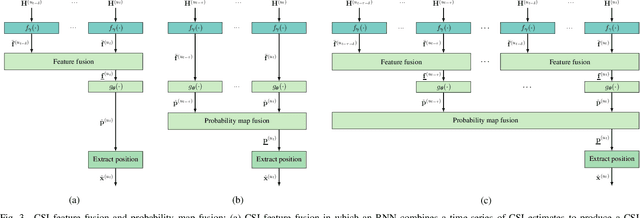
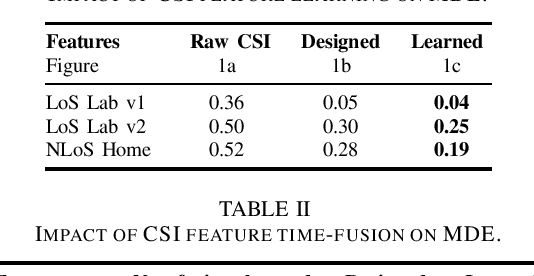
Abstract:Recent channel state information (CSI)-based positioning pipelines rely on deep neural networks (DNNs) in order to learn a mapping from estimated CSI to position. Since real-world communication transceivers suffer from hardware impairments, CSI-based positioning systems typically rely on features that are designed by hand. In this paper, we propose a CSI-based positioning pipeline that directly takes raw CSI measurements and learns features using a structured DNN in order to generate probability maps describing the likelihood of the transmitter being at pre-defined grid points. To further improve the positioning accuracy of moving user equipments, we propose to fuse a time-series of learned CSI features or a time-series of probability maps. To demonstrate the efficacy of our methods, we perform experiments with real-world indoor line-of-sight (LoS) and non-LoS channel measurements. We show that CSI feature learning and time-series fusion can reduce the mean distance error by up to 2.5$\boldsymbol\times$ compared to the state-of-the-art.
Improving Channel Charting using a Split Triplet Loss and an Inertial Regularizer
Oct 21, 2021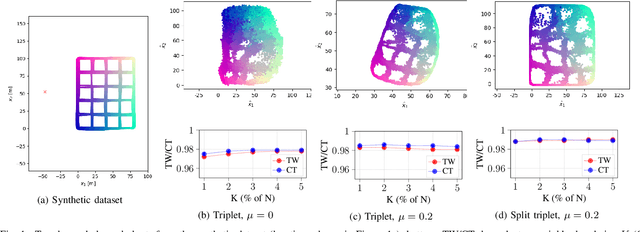
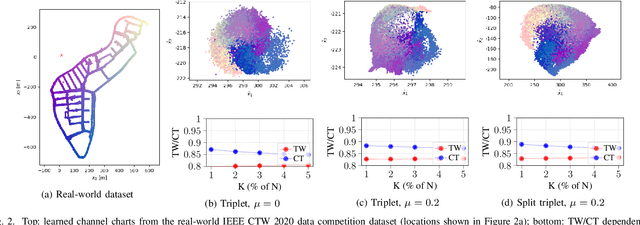
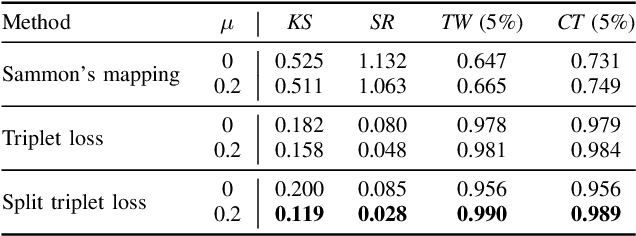
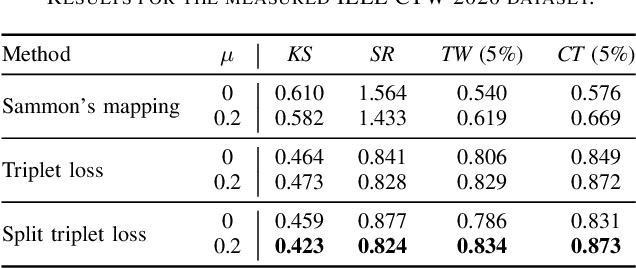
Abstract:Channel charting is an emerging technology that enables self-supervised pseudo-localization of user equipments by performing dimensionality reduction on large channel-state information (CSI) databases that are passively collected at infrastructure base stations or access points. In this paper, we introduce a new dimensionality reduction method specifically designed for channel charting using a novel split triplet loss, which utilizes physical information available during the CSI acquisition process. In addition, we propose a novel regularizer that exploits the physical concept of inertia, which significantly improves the quality of the learned channel charts. We provide an experimental verification of our methods using synthetic and real-world measured CSI datasets, and we demonstrate that our methods are able to outperform the state-of-the-art in channel charting based on the triplet loss.
* 6 pages, 2 figures
Hardware-Aware Beamspace Precoding for All-Digital mmWave Massive MU-MIMO
Aug 13, 2021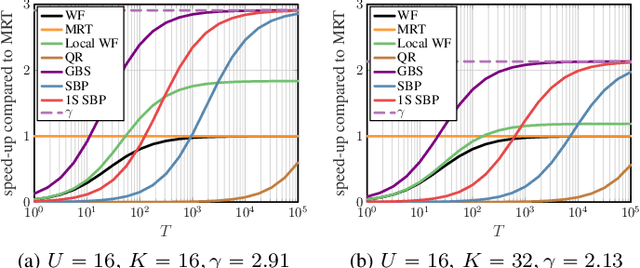

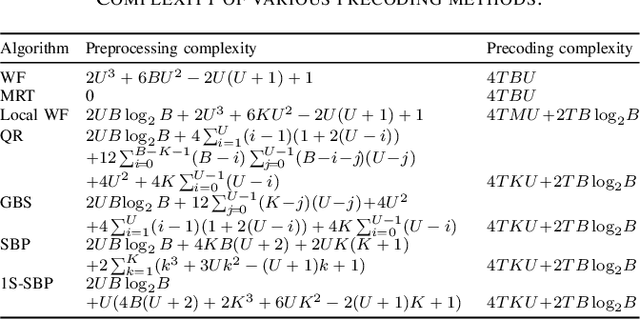
Abstract:Massive multi-user multiple-input multiple-output (MU-MIMO) wireless systems operating at millimeter-wave (mmWave) frequencies enable simultaneous wideband data transmission to a large number of users. In order to reduce the complexity of MU precoding in all-digital basestation architectures, we propose a two-stage precoding architecture that first performs precoding using a sparse matrix in the beamspace domain, followed by an inverse fast Fourier transform that converts the result to the antenna domain. The sparse precoding matrix requires a small number of multipliers and enables regular hardware architectures, which allows the design of hardware-efficient all-digital precoders. Simulation results demonstrate that our methods approach the error-rate of conventional Wiener filter precoding with more than 2x reduced complexity.
Improving Channel Charting with Representation-Constrained Autoencoders
Aug 07, 2019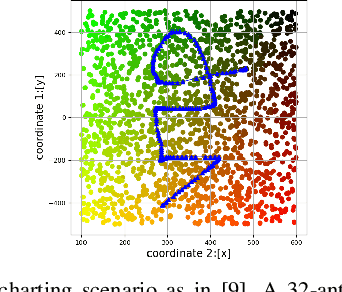
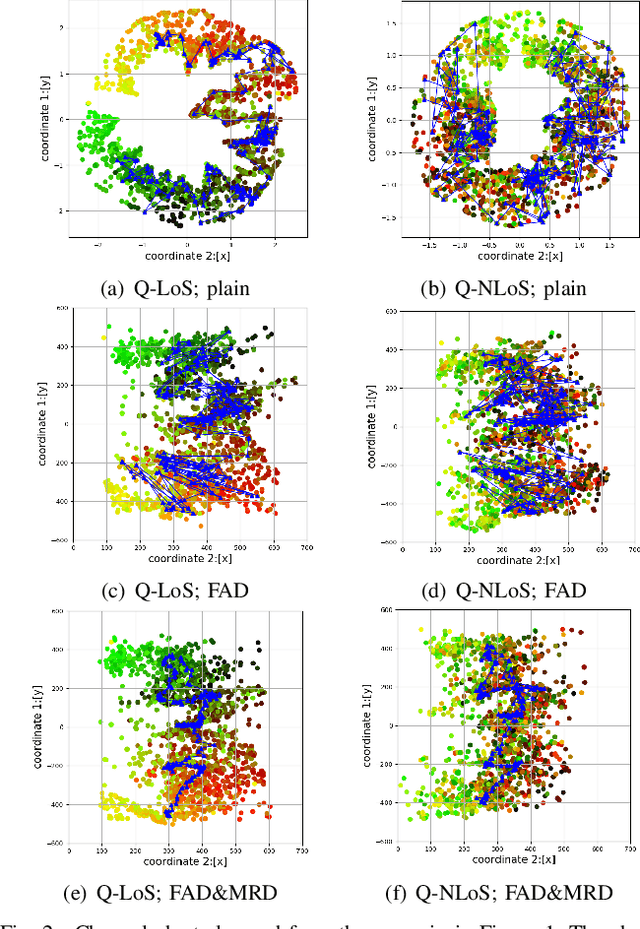


Abstract:Channel charting (CC) has been proposed recently to enable logical positioning of user equipments (UEs) in the neighborhood of a multi-antenna base-station solely from channel-state information (CSI). CC relies on dimensionality reduction of high-dimensional CSI features in order to construct a channel chart that captures spatial and radio geometries so that UEs close in space are close in the channel chart. In this paper, we demonstrate that autoencoder (AE)-based CC can be augmented with side information that is obtained during the CSI acquisition process. More specifically, we propose to include pairwise representation constraints into AEs with the goal of improving the quality of the learned channel charts. We show that such representation-constrained AEs recover the global geometry of the learned channel charts, which enables CC to perform approximate positioning without global navigation satellite systems or supervised learning methods that rely on extensive and expensive measurement campaigns.
Channel Charting: Locating Users within the Radio Environment using Channel State Information
Aug 21, 2018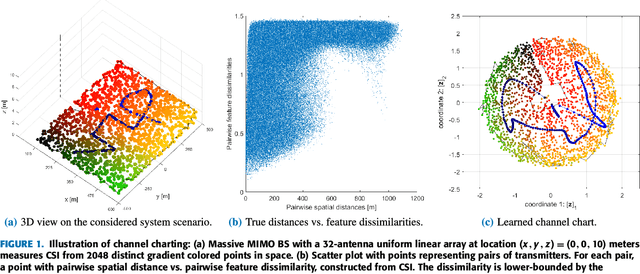
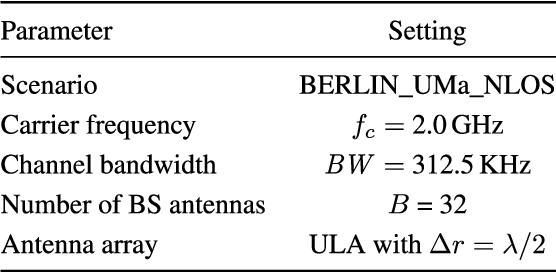


Abstract:We propose channel charting (CC), a novel framework in which a multi-antenna network element learns a chart of the radio geometry in its surrounding area. The channel chart captures the local spatial geometry of the area so that points that are close in space will also be close in the channel chart and vice versa. CC works in a fully unsupervised manner, i.e., learning is only based on channel state information (CSI) that is passively collected at a single point in space, but from multiple transmit locations in the area over time. The method then extracts channel features that characterize large-scale fading properties of the wireless channel. Finally, the channel charts are generated with tools from dimensionality reduction, manifold learning, and deep neural networks. The network element performing CC may be, for example, a multi-antenna base-station in a cellular system and the charted area in the served cell. Logical relationships related to the position and movement of a transmitter, e.g., a user equipment (UE), in the cell can then be directly deduced from comparing measured radio channel characteristics to the channel chart. The unsupervised nature of CC enables a range of new applications in UE localization, network planning, user scheduling, multipoint connectivity, hand-over, cell search, user grouping, and other cognitive tasks that rely on CSI and UE movement relative to the base-station, without the need of information from global navigation satellite systems.
 Add to Chrome
Add to Chrome Add to Firefox
Add to Firefox Add to Edge
Add to Edge